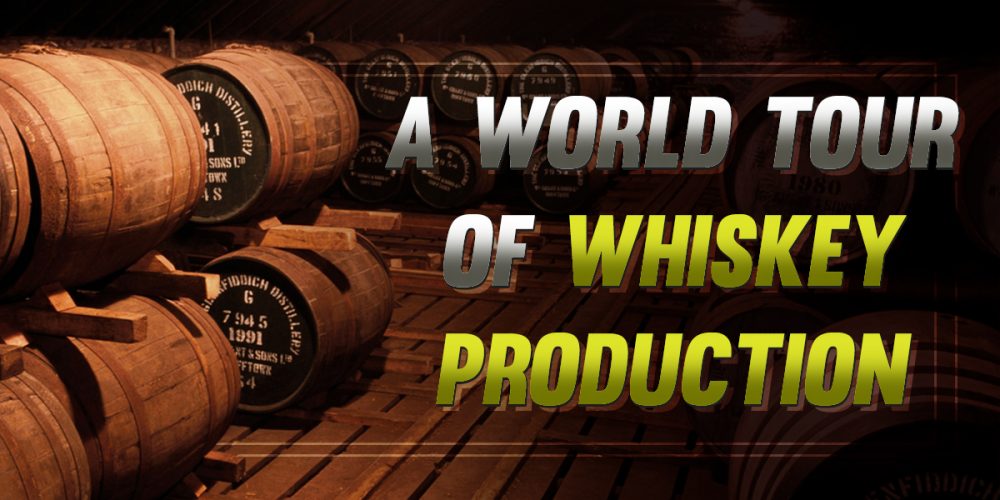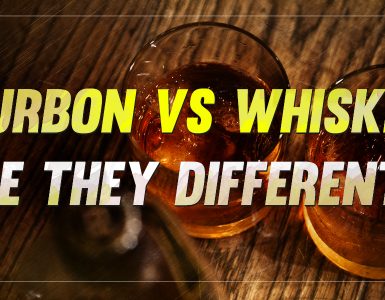If you are a whiskey drinker, you know that whiskey is an acquired taste. It is not the easiest drink to fall in love with at first sip because of high its alcohol content, which causes that “burn.” Some, like the extremely smoky, peat-infused Scotch whiskies, can be very challenging.
Still, you have learned to embrace and love this spirit, convinced that like many of life’s great pleasures, whiskey is a drink that’s worth the pursuit. Because of its rich and diverse flavors, you know that whiskey is just as much an adventure as it is a drink.
But did you ever wonder where your whiskey came from? How it was produced? Do you want to know a little of its history? Let’s go on tour to visit the best distilleries of the world to explore and indulge in whiskey’s diversity!
Scotland
The motherland – where the mother lode of quality whisky is, where whisky-making is an art, and where whisky is considered a great source of national pride.
With distilling dating back as far as 1494, whisky making is very much engrained in Scottish tradition. No wonder many of the world’s best whiskies are of Scotch origin. There are a lot of distilleries offering cultural and insight tours and tasting sessions. And there are probably just as many whisky bars where there’s always a dram waiting for you, whatever your palate’s preference may be.
- Speyside – Speyside in northeastern Scotland is home to most distilleries in the country. There are currently over 30 in operation within what is a relatively small area, based around the towns of Dufftown, Elgin, Keith, Rothes and the surrounding glens. The whiskies produced here include some of the most famous in the world, such as Glenfiddich and Glenlivet, plus a number of hidden gems.
- Islay – The fabled island of Islay is the traditional home of smoky whiskies. Six of the eight operating distilleries produce the best smoky whiskies in the world. These are Ardbeg, Bowmore, Caol Ila, Kilchoman, Lagavulin and Laphroaig.The other two are Bruichladdich and Bunnahabhain, whose whiskies are normally unpeated and non-smokey.
- Islands – The whisky region known as the Islands refers to a few Scotch producing islands around the Scottish coast, such as Mull (home of Tobermory) and the far flung Orkneys (home of Highland Park and Scapa). If you want a vacation from everything, visit the island of Jura. It has a population of 200 humans, 4,000 deer, plus a restaurant, pub, shop, church, the Jura distillery – and little else.
- Highlands – The distilleries in this very large region of Scotland are spread far and wide. These include Glengoyne that is very close to the ‘Highland Line’, Oban on the west coast, Dalwhinnie in the middle of the Grampians and Old Pulteney up in the far north. Whiskies from the Highlands vary in style and flavor, although they are generally known for being full-bodied and smoky.
- Lowlands – At present, there are only three operating distilleries in this region – Glenkinchie, Auchentoshan and Bladnoch (which was closed in 1993 and reopened in 2000). Their whiskies are generally fresh and fruity and are regarded as very easy to drink.
- Campbeltown – This was once the epicenter of Scottish whisky production with 15 distilleries. Now there are only three operating distilleries left — Springbank, Glen Scotia and Glengyle (which has only just reopened in 2004, having been closed way back in 1925). Their whiskies have a light smoky flavour mixed with some maltiness and sweetness because they all use peated malt.
USA
America is one of the world’s largest producers of whiskey. Whiskey was introduced to America in the 1700s by settlers from Scotland and Ireland, who were forced to use different grains to produce their whiskey due to the different climate and soil conditions. These have evolved to what we know now as the American whiskies: bourbon, Tennessee, rye, corn, wheat and blended whisky.
- Kentucky – When you think American whiskey, you think Bourbon. And when you think Bourbon, you think Kentucky. There are seven different bourbon distilleries in Kentucky and they produce numerous brands of whiskey, each using a unique recipe. The seven distilleries are Bernheim, Buffalo Trace, Four Roses, Jim Beam, Maker’s Mark, Wild Turkey and Woodford Reserve.
- Tennessee – This, of course, is the land of Jack Daniel’s. The town of Lynchburg, where the Jack Daniel’s distillery is, has an authentic small town feel about it. Not too far up the road from Lynchburg is the other Tennessee whiskey distillery, George Dickel. Both offer guided tours, which can be a real treat even for teetotalers.
Japan
Japan is the world’s third largest producer of whisky, after Scotland and USA. Yes, they beat Ireland. Japan has been wowing the world with a range of award-winning whiskies since 2001. Japanese whisky contributes to 5% of all worldwide whisky sales, which means that for every 20 bottles of whisky sold, one is Japanese. Japan has eight operating whisky distilleries, including the original Yamazaki, and Chichibu, the first new distillery in Japan since the 1970s and which opened in 2008.
Ireland
Ireland is currently the fourth largest producer of whisky in the world. Many attribute the Irish with inventing whiskey and then bringing the idea across to Scotland during medieval times. However, the true origins of whiskey remain unclear (unless you’re talking to an Irishman or a Scotsman!).
There used to be many distilleries in the country but now only three remain – Bushmills in Northern Ireland, Cooley to the north of Dublin and Midleton down in the south. These three distilleries produce a wide range of different whiskies under old distillery names, all of which use traditional recipes from the closed distilleries.
Australia
Australia was one of the first countries outside Scotland & Ireland to produce whiskey in relatively large quantities. Some distilleries in the country are Nant’s in Tasmania’s Central Highlands; Bakery Hill in the state of Victoria; Lark, whose founder, Bill Lark, is regarded as the father of the Australian whisky industry after setting up this distillery in Tasmania in 1992; and the award-winning Sullivans Cove Distillery in Cambridge, Tasmania.
Several whiskey distilleries have also sprung up in some seemingly unexpected locations:
India – Amrut is India’s premium whisky distillery that was founded in 1948 and is located in Bangalore
Taiwan – Kavalan is Taiwan’s first whisky distillery, set up by the King Car Corporation.
South Africa – Sedgwick is South Africa’s premium whisky distillery and home to the popular Three Ships blended range.
New Zealand – Milford distillery is located on New Zealand’s South Island.
Whiskey is now produced all over the world. Each country and each distillery has its own unique style and character. Knowing a little about the history, location and distilling techniques of a distillery can make choosing a whisky a less daunting task, and your drinking experience more enjoyable. For those of you in love with the ‘water of life,’ now is a great time to start planning your next holiday!
















